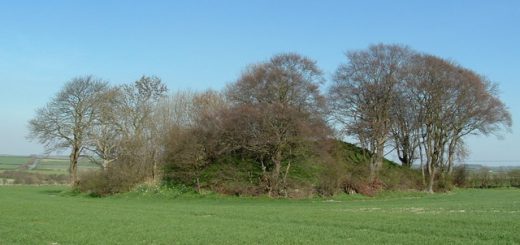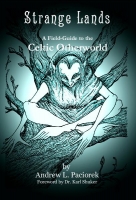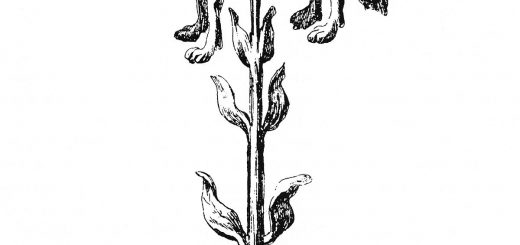Charmed Irish Stones
There is a tradition in the North of England and Scotland pertaining to special stones brought over from Ireland that have the ability to heal snake bites on cattle. In Irish Charms in Northern England, Denzil Webb referred to an article by William Morley Egglestone, which appeared in the March 1889 edition of the Monthly Chronicle of North-Country Lore and Legend. Mr Egglestones wrote:
“In the month of October, 1884, I handled a once famous Irish stone which was in the custody of a good dame, residing beneath the shadow of the old Abbey of Blanchland, in Northumberland. On inquiry being made for the charm, a search was made in the corner of a drawer, and a bag, yellow with age, was carefully brought out, unfolded, and its contents – the Irish stone – exhibited.”
“The good lady was seventy-eight years of age, and the charm was in the house when she married into it, forty-nine years before. It was the property of her husband, who died about twenty-nine years since, and she had heard him say that the stone belonged to his father.”
“During her time it had been lent “all up and down” to individuals who had got envenomed, or had cattle so suffering, and she could testify that its application stopped inflammation, as she remembered effectually rubbing the face of her husband, who had been stung by a bee.”
The charmed stone was thought to have originated in Connaught and was a water-worn flint, lentiform (lentil-shaped) and dark with white blotches. “This Blanchland charm had not been used for several years,” he said, “but within the good lady’s remembrance it was of considerable repute, it being the only Irish stone in the district.”
These charmed Irish stones wee highly regarded for their healing abilities and it is said that they worked better in the hands of actual Irish men or women. These stones were thought to lose their power if they touched English soil, so presumably had to be handled with care.
Other items originating in Ireland were also deemed to have the power of combating the venom of adders, Britain’s only poisonous snake. Irish horses, cows, sticks and even the touch of an Irish man was considered powerful charms against the serpents.
I came across a quote that I could not accurately source, but it probably came from Egglestones article of 1889. It pertained to ability of Irish cows to kill adders. “A relation of mine witnessed, some sixty years ago, an extraordinary result of this virtue in Irish cattle. Large herds of these animals are driven through Northumberland to the southern markets. They were frequently depastured for a night at Redesdale in one particular pasture which was infested with adders. One morning, after a drove of Irish cattle had departed, hundreds of dead adders, as witnessed by my friend, were found on the ground. The belief is that if an adder gets on to where an Irish cow has been lying, it cannot get off, but dies…..adders abound on the banks of the Derwent, in Northumberland. At a place called Ackton, close to this stream, cows frequently get envenomed in the pastures. A dweller, having a cattle gate on a neighbouring farm called Winnoshill, bought an Irish cow, and, fortunately for the owner, no reptile would touch it.”























Recent Comments